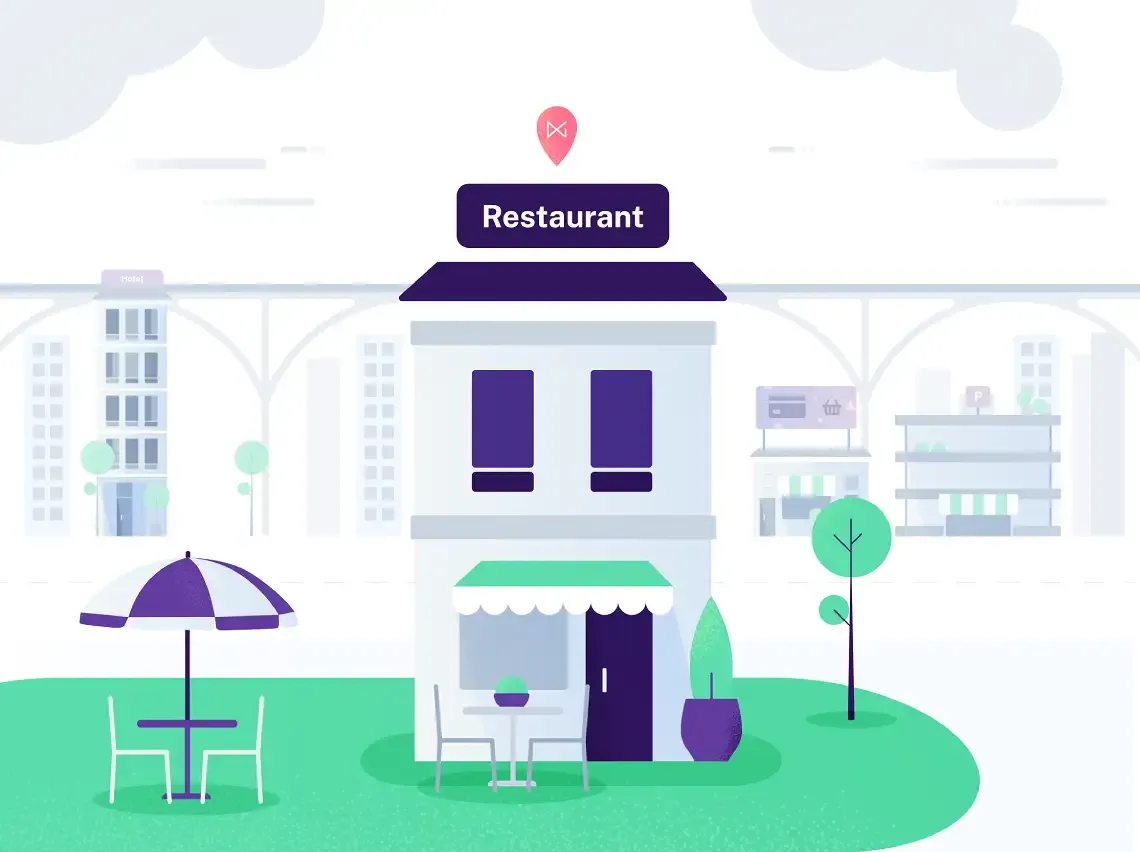The concept checks the boxes for doing business in a pandemic, but it takes the right technology to make it work.
Successful restaurant businesses have historically offered high-touch customer service. From counter workers in quick-service restaurants to servers in fine dining establishments, restaurant staff focused on providing efficient service that meets – or exceeds – customer expectations. Often, it meant service with a smile, and sometimes a server even unfolded a napkin for the customer. Now, as smiles are hidden behind masks and customer service is more hands-off and socially distanced than high-touch, an emerging restaurant concept, the ghost kitchen, is growing in popularity.
Trends Contributing to the Rise of Ghost Kitchens
Few industries have ever experienced the rapid, fundamental changes that restaurants faced in 2020, and they adapted with new services, such as:
ONLINE ORDERING
Even before the pandemic, consumers increasingly favored off-premises dining. Convenience-seeking diners found that ordering and paying online and scheduling delivery or pickup aligns with their busy lives. However, since the pandemic began, it grew even more – Upserve, for example, reports an 840 percent increase in weekly sales from online ordering from February to April. Many restaurants transitioned from primarily table service or fast-casual concepts to takeout and delivery and enabled their customers to place their orders online.
CURBSIDE SERVICE
Many businesses ramped up existing curbside pickup service or implemented it to allow for even less interaction between restaurant staff and customers. Customers who placed orders online or by phone could simply park in a designated space, phone, text or use an app to let restaurant staff know they had arrived, and a server would bring their orders directly to their vehicles.
Customers often made online payments, but, in some cases, the restaurant could take payment at the vehicle. With germ-ridden cash falling out of favor with consumers, customers preferred digital payment options, and restaurants repurposed their pay-at-the-table devices to run cards at pickup. Better yet, restaurants extended the touch-free nature of curbside pickup with contactless card or mobile wallet payments.
BARRIERS AND DISTANCING
Health safety officials ordered many restaurant dining rooms to close in an effort to slow the spread of COVID-19, and when they reopened, they had to follow strict guidelines. This inspired innovation, such as new configurations for indoor tables to meet distance requirements, plexiglass or other types of barriers that protected employees and customers, air filtration and purification systems, new outdoor dining spaces, and kiosk ordering and payment.
Enter: the Restaurant without Brick-and-Mortar Dining Spaces
After adapting to pandemic-related regulations and consumer behaviors, restaurants that once profited from in-house dining now find that online ordering and curbside pickup are their largest revenue streams. Additionally, with fewer tables in dining areas, overhead may be outpacing profits from the dining room. Some restaurants have concluded that brick-and-mortar dining facilities are no longer necessary, and they can be more profitable with ghost kitchens.
The ghost kitchen concept, which began its rise in popularity in 2019, involves a business operating a kitchen but no public dining space. It more closely aligns with consumers’ current preferences for maintaining social distance and limiting interactions, and it also provides relief to cash-strapped businesses by lowering overhead and streamlining operations. Besides, while the pandemic continues, running a ghost kitchen eliminates the possibility that people could become infected while dining inside a restaurant.
Every ghost kitchen business is not the same – some restaurateurs are adding their unique take. For example, some are selling from food trucks near parks or other areas where their customers can enjoy their menu items outdoors, while some are partnering exclusively with third-party ordering and delivery platforms, such as Uber Eats or DoorDash. Other entrepreneurs are leveraging the concept to launch new businesses with less risk involved without the costs of a building and a wait staff.
Furthermore, a ghost kitchen can be anywhere, for example, in a building in an industrial park off the beaten path. Restaurateurs don’t have to compete for locations with foot traffic – or pay the high rent to get them.
The Tech Behind a Successful Ghost Kitchen
For any ghost kitchen in any location to operate efficiently, it needs reliable ways to engage customers, take orders, communicate information to food prep areas, and prepare orders for delivery or pickup. Restaurants shifting from table service to a ghost kitchen business need to carefully adapt their menus to takeout-friendly choices and then showcase that menu online. These businesses may also benefit from a robust online ordering platform that allows them to accept orders directly and avoid charges from third-party food delivery platforms. Ghost kitchens also need a way to label and organize orders professionally and manage delivery staff, so the right menu items are delivered to the right customers.
A flexible payments platform is also crucial so that ghost kitchens can accept any payment type their customers choose to use, securely and conveniently. Moreover, data from the payments platform can provide business owners with valuable insights about their customers and their preferences and behaviors to make intelligent decisions about their menus, inventory, supply chain, and marketing and promotions.
Flexible payments and tech solutions provide one more crucial advantage: the ability to adapt when change impacts the industry again. Ghost kitchen businesses may prevail as the best concept for years to come, or they, too, may face challenges in the future and need to evolve. The smartest strategy is to build a strategy, design processes, and use technology that provides options. As the restaurant industry knows all too well, things can change.
To learn more, reach out to a member of our team today.




